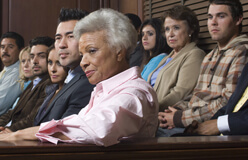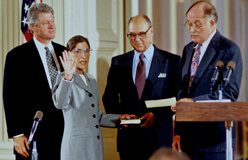Have you ever watched a police procedural show or a movie about a trial?
If you have, you know that the detective or lawyer involved has a theory about the case. The theory is a narrative, or story, that the person thinks will persuade a judge or jury to decide the outcome of a case in a particular way. Ruth Bader Ginsburg was no different. The outcome she wanted for the cases she worked on was to help end the kind of discrimination she had experienced as a young lawyer. Her theories were both unique and, in many ways, effective. Little by little, the cases Ginsburg won chipped away at policies that discriminated against women – even when her client was a man.



